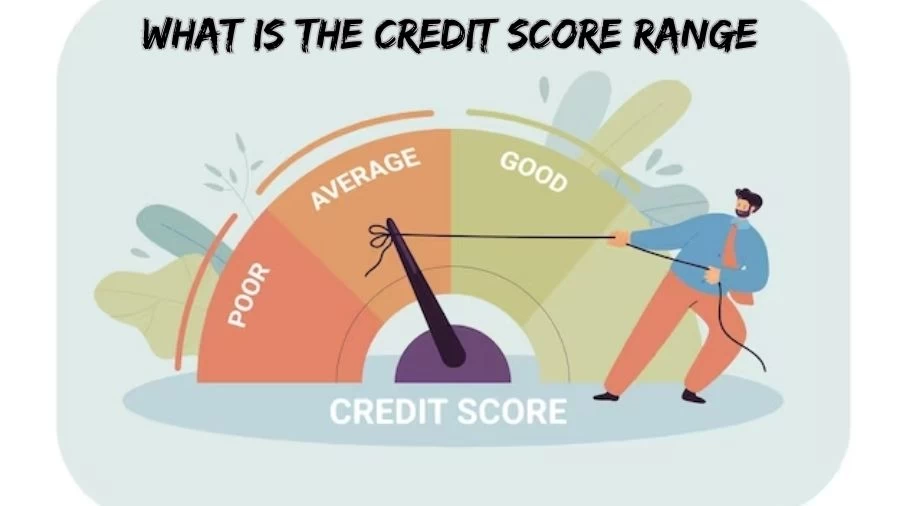
What is the Credit Score Range? How Are Credit Scores Calculated?
Credit scores, which range from 300 to 850, encompass categories such as Excellent for 800-850, Very Good for 740-799, Good for 670-739, Fair for 580-669, and Poor for 300-579, and they crucially impact loan approvals and terms.
by Kowsalya
Published Aug 28, 2023 | Updated Aug 28, 2023 | 📖 9 min read
On This Page
What is the Credit Score Range?
Credit scores are vital indicators for lenders, reflecting the borrowing potential of individuals. Calculated from five factors payment history, owed amounts, credit history length, credit mix, and new credit these scores guide lending decisions.
Your credit score range wields considerable influence, impacting loan approval and interest rates. It communicates your risk as a borrower. Elements like payment history, debt levels, and credit accounts shape your score.
Loan approval and interest rate determination hinge on your credit score. Exceptional credit falls between 740 and 850, while 700 to 750 is very good. The credit score landscape contains several models and ranges, but they share similarities:
- 800 to 850: Excellent
- Indicates low-risk borrowers, fostering easy loan approval.
- 740 to 799: Very good
- Reflects positive credit behavior and enhances credit access.
- 670 to 739: Good
- Considered acceptable or lower-risk by lenders.
- 580 to 669: Fair
- Classified as "subprime," facing credit access challenges.
- 300 to 579: Poor
- Credit approval struggles are common; score improvement is crucial.
These ranges guide borrowers in managing credit for better financial prospects.
Exceptional Credit Score: 800 to 850
A credit score ranging from 800 to 850 signifies a borrower who consistently demonstrates prudence in managing their credit obligations. Such borrowers are notably likely to secure loans at the most favorable interest rates available.
Individuals falling within this score range showcase a prolonged record of punctual payments and maintain minimal credit card balances. Their exceptional credit scores position them to enjoy reduced interest rates across various financial products, including mortgages, credit cards, loans, and lines of credit. The reason behind these preferential rates is the perception of low risk associated with these borrowers; their track record suggests a minimal likelihood of defaulting on their financial commitments.
The higher end of the credit score spectrum showcases commendable financial responsibility, leading to tangible benefits through more affordable credit options. This highlights the significance of cultivating and sustaining a strong credit profile for individuals seeking optimal borrowing terms.
Very Good Credit Score: 740 to 799
A credit score ranging from 740 to 799 reflects a borrower who demonstrates commendable financial responsibility in managing money and credit. This category of borrowers showcases a consistent track record of punctual payments across various aspects, encompassing loans, credit cards, utilities, and rental obligations. Their diligent adherence to timely payments underscores their reliability.
Moreover, individuals within this credit score range exhibit prudent credit utilization by maintaining relatively modest balances on their credit cards compared to their credit limits. This indicates their ability to manage credit wisely without overextending themselves financially.
Overall, this credit score bracket indicates a commendable level of financial discipline and reliability. Borrowers falling within this range are poised to access favorable lending terms and competitive interest rates due to their demonstrated capability to meet their financial commitments responsibly. This underscores the importance of responsible financial habits in securing a strong credit profile and better financial opportunities.
Good Credit Score: 670 to 739
A credit score ranging from 670 to 739 positions a borrower slightly above or close to the average of U.S. consumers. In comparison, the national average FICO score stood at 714 in 2022. While individuals falling within this range can still access competitive interest rates, they might not secure the most favorable rates compared to those in higher credit categories. Moreover, qualifying for certain types of credit could be more challenging.
For instance, when seeking an unsecured loan with this credit score, it becomes crucial to thoroughly explore available options. This enables borrowers to identify solutions that align best with their requirements while minimizing potential drawbacks. Although not at the pinnacle of credit scores, this range still demonstrates a reasonable level of financial responsibility, positioning borrowers to navigate credit opportunities effectively and make informed choices to enhance their credit profile.
Fair Credit Score: 580 to 669
Individuals whose credit scores fall within the range of 580 to 669 are categorized as having a "fair" credit standing. Although their credit history might show a few blemishes, significant delinquencies are absent. Lenders are still inclined to offer credit to these borrowers, albeit not at highly competitive interest rates.
This "fair" credit category, as defined by the Fair Isaac Corporation (FICO), implies a moderate level of creditworthiness. While some past credit challenges might be evident, these borrowers are not marked by severe credit issues.
Despite this, they might encounter slightly higher interest rates compared to those with better credit scores when seeking various forms of credit, including loans and credit cards. Enhancing credit practices and managing obligations diligently can gradually improve creditworthiness, providing the opportunity to secure more advantageous lending terms in the future.
Poor Credit Score: Under 580
An individual whose credit score lies within the range of 300 to 579 possesses a credit history significantly marred by damage. This could arise from numerous defaults across various credit products from multiple lenders. Alternatively, a poor score might result from bankruptcy, with Chapter 13 leaving an impact for seven years and Chapter 11 for a decade on the credit record.
Enhancing the credit score involves strategies like debt reduction, on-time payments, and refraining from opening new credit accounts. Borrowers falling within this range face substantial challenges in acquiring fresh credit. Consulting a financial expert for credit repair guidance is advisable if your score falls here.
Furthermore, certain credit repair companies can help eliminate negative marks from your credit score, typically for a monthly fee. When seeking an unsecured loan, comparing various lenders is essential to identify the least risky options. This credit score range necessitates careful financial management and strategic planning to rectify credit standing and eventually regain access to more favorable credit opportunities.
How Are Credit Scores Calculated?
The computation of your credit score hinges on the data housed within your credit report. This encompassing evaluation encompasses multiple elements, including your track record of payments, the assortment of credit accounts under your name, the duration of your credit history, and your credit utilization rate—an indicator of how much of your available credit you're utilizing.
It's important to note that there exists a diversity of methods to compute credit scores. Various scoring models are utilized by lenders and credit reporting agencies. These models diverge in their emphasis on specific aspects. For instance, one model might accord primary importance to your payment history, while another could give precedence to the variety of credit types you possess. Due to these disparities, your credit score might fluctuate depending on the particular model employed in its calculation.
Moreover, the source of your credit scores can vary due to the credit reporting agency involved. Not all lenders and creditors relay information to all three nationwide consumer reporting agencies Equifax, TransUnion, and Experian. Some might exclusively report to one or two of these agencies, or potentially none at all.
This intricate landscape underscores the multifaceted nature of credit scoring, influenced by both the chosen scoring model and the specific credit reporting agency. As a result, comprehending these intricacies is pivotal for effectively managing and enhancing your creditworthiness.
Business Credit Score Range
Business credit scores diverge from personal credit scores in terms of their range. While personal credit scores commonly span from 300 to 850, business credit scores follow a distinct scale, ranging from 1 to 100. This differentiation stems from the unique dynamics of evaluating business creditworthiness.
The business credit score range of 1 to 100 offers a more condensed spectrum compared to personal scores. It simplifies the assessment process for businesses by providing a concise numerical representation of credit health. Just like personal credit scores, higher values signify better creditworthiness, showcasing a business's reliability and capacity to meet financial obligations.
This narrower range allows lenders, suppliers, and partners to swiftly gauge a business's credit risk. Factors such as payment history, credit utilization, length of credit history, and public records contribute to a business's score. Understanding this distinctive scoring scale empowers businesses to proactively manage their credit and establish strong financial foundations.
What is a Bad Credit Score Range?
A low credit score typically falls within the "subprime" credit range, although the specific threshold can vary depending on the credit-scoring agency. Generally, a subprime credit score is often below 670.
Credit-scoring agencies employ diverse formulas or models to compute credit scores, resulting in a variety of scores and models. This implies that individuals possess multiple credit scores. The range for most credit scores typically spans from 300 to 850, as outlined by the Consumer Financial Protection Bureau (CFPB). The two widely used sources for credit scores are FICO and VantageScore.
It's essential to note that the interpretation of credit scores, including what is considered a low score, is often determined by potential lenders. However, FICO and VantageScore generally share similar perspectives on credit score categorizations. Understanding this intricate landscape aids individuals in comprehending their creditworthiness and empowers them to make informed decisions regarding their financial health.
What Are the 5 levels of Credit Scores?
FICO credit scores are categorized into five tiers: excellent, very good, good, fair, and poor. The classification corresponds to the level of creditworthiness a person possesses. The extent of your credit score range plays a pivotal role in determining your eligibility for loans and the interest rates applicable to them.
Each credit score tier reflects a different level of risk to lenders. An excellent score signifies low risk, leading to favorable loan terms and competitive interest rates. Very good and good scores also demonstrate creditworthiness, resulting in reasonable loan offers. A fair score may still grant access to credit, albeit potentially at slightly higher rates. Conversely, a poor score reflects higher risk, making loan approval challenging and potentially resulting in significantly higher interest rates.
Understanding where your credit score falls within this framework is crucial for making informed financial decisions. It empowers individuals to work towards improving their creditworthiness and accessing better loan opportunities in the future.
How Can I Improve My Credit Scores?
The encouraging aspect is that your credit score isn't a fixed value; it has the potential to be enhanced over time through responsible choices. It's vital to acknowledge that this process requires patience, especially if your credit history hasn't been ideal in the past.
Several credit practices can contribute to long-term score improvement. Timely payment of obligations, maintaining the longevity of older accounts to extend your credit history, and keeping a low credit utilization rate are noteworthy habits to consider. These actions gradually foster an improved credit standing.
Additionally, regularly monitoring your credit report is crucial to ensure the accuracy of the information present. While credit reports don't directly provide your credit scores, they offer a comprehensive overview of your credit history. To assess your credit scores, various methods are available for your convenience. By embracing these strategies, individuals can navigate the journey of credit score enhancement, paving the way for better financial opportunities in the future.
What is the Credit Score Range- FAQs
1. What is the credit score range?
The credit score range typically spans from 300 to 850, indicating the lowest and highest possible scores an individual can have.
2. How are credit scores categorized?
Credit scores are categorized into different ranges based on their numeric values. These ranges help lenders assess the creditworthiness of borrowers.
3. What does an "Excellent" credit score mean?
An Excellent credit score falls within the range of 800 to 850. It signifies a low-risk borrower with a high likelihood of receiving favorable loan terms and approvals.
4. What constitutes a "Poor" credit score?
A Poor credit score falls within the range of 300 to 579. It suggests a higher level of risk for lenders, making it challenging to secure loans and potentially resulting in higher interest rates.
5. How do credit score ranges impact borrowing opportunities?
Credit score ranges influence an individual's ability to access credit and the terms they're offered. Lenders use these ranges to determine the risk associated with lending money, affecting loan approvals and interest rates.




